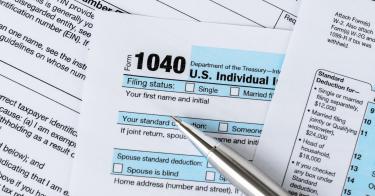What is your fair share of what someone else has earned? That’s the fundamental principle being tested when discussing “the wealthy paying their fair share.”
Politicians frequently use this hackneyed phrase with ill-defined terms in their calls to raise taxes. Still, the numbers don’t support the idea that the wealthy are skirting their financial responsibility to the nation.
According to the U.S. Treasury, the bottom 10% of income earners pay no taxes, and the second income decile has an average tax rate of minus-4.8%. Mechanisms like refundable tax credits mean this group receives more from the Treasury than it pays in taxes, creating a negative rate.
Those in the 20% to 30% of income earners pay an average tax rate of just 2.8%. Predictably, as a person earns more, he or she pays a higher percentage of his or her income in taxes. Still, no one in the bottom half of income-earners pays more than a 10.1% average tax rate.
The average tax rate has climbed 27% for the top 10% of income earners, but many Americans are surprised to learn that the threshold for this group is just $136,000 for individual income earners.
>>> Good Deal, Bad Deal: The 2017 Tax Law vs. the 2024 Tax-Welfare Bill
Most people in the top-income decile are considered middle class. To find the “wealthy,” we must look at a much narrower portion of the income distribution.
The threshold for the top 0.1% of income earners is $3.3 million, and their average tax rate is 33.5%, meaning just over one-third of their income is confiscated in federal taxes.
Then, there are state and local taxes to consider. In places like California and New York, these can push average tax rates close to 50%.
Is it fair to take half of what someone else has earned? And who is wealthy? A high income is not the same as wealth, which is only acquired through saving and investing.
It’s disturbing that the current political climate tends to demonize wealth. The saving and investing of income, not dissipation through spending, generates economic growth. Without savings, capital will decline. That means fewer factories and machines, fewer homes available, slower technological advances and medical breakthroughs, etc.
Investment in capital puts tools in the hands of workers, making them more productive, which increases their incomes. More capital also means more houses and apartments, something America desperately needs amid a housing shortage and cost-of-living crisis.
Capital investment also results in higher living standards because it drives economic growth. As capital accumulation spread across the globe over the last century, technological improvements exploded. The percentage of people living in poverty was cut from 80% to less than 10%, even as the population grew exponentially.
Those who think the wealthy don’t pay their fair share of taxes should also remember if you tax something, you get less of it. Wealth is no different. A reduction in wealth means a reduction in economic growth, leaving everyone worse off, particularly low-income earners.
>>> The SALT Marriage Penalty Elimination Act: Revenue Estimates and Analysis
The top 0.1% of income earners provide a disproportionate amount of America’s economic growth, which is why they also earn a disproportionate amount of the nation’s income. But the amount of taxes they pay are even more out of proportion, accounting for 14.9% of all federal tax receipts from just 8.9% of family incomes.
That indicates high-income earners are already paying more than their fair share.
Unfortunately, complex data like these rarely involve conversations around amorphous words like “wealthy” and “fairness.” Instead, bureaucrats gin up class envy by cherry-picking data to promote a false narrative of imagined animosity between income groups.
The facts are very different. While capital investment and innovation undoubtedly make investors and inventors wealthier, they make society wealthier too. More than 90% of the benefits created by inventors fall on society broadly, with less than 10% going to the inventors themselves.
For example, the creators of smartphones have obviously received substantial benefits from selling their invention, but everyone who owns a smartphone has clearly benefited, too. (You may be reading this on one right now!)
High-income earners already pay disproportionately high taxes and receive disproportionately low amounts of the proceeds from their economic activity. They’re paying their fair share as is. Confiscating even more is a surefire way to kill innovation and hurt middle-class America.
This piece originally appeared in MSN


